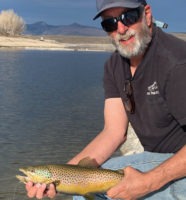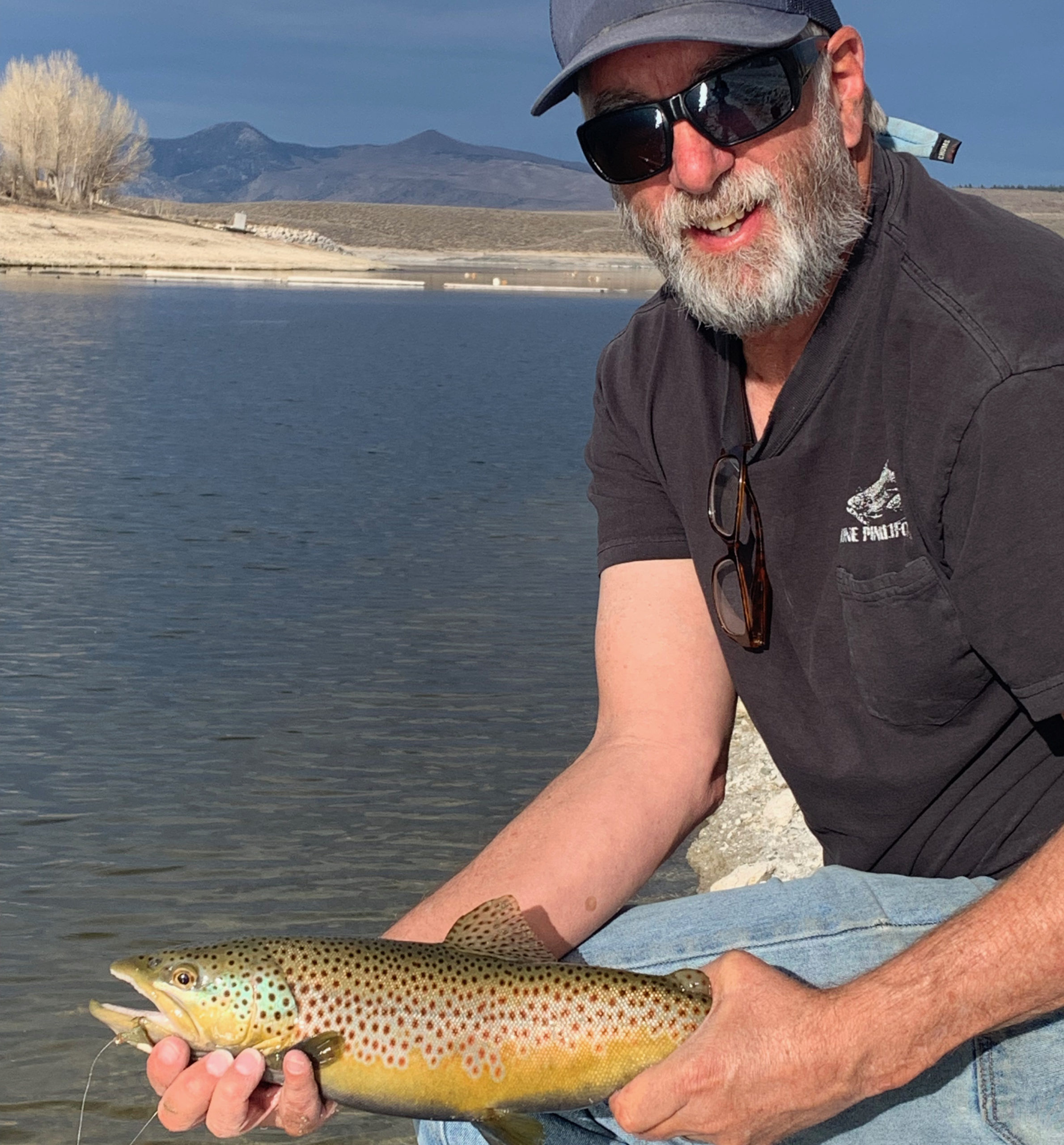
Sierra Bright Dot Fly Fishing Report 05-20-2022
Sierra Bright Dot Fly Fishing Guide Service
sierrabrightdot.com
It’s shaping up to be a hot, windy spring especially in the Owens Valley. In between spring storms we are getting temperatures in the high 80’s and low 90’s. Insect activity in Owens Valley waters are getting active. Insects in the upper elevations are just starting to get active. Lakes in the backcountry and still iced over and will be for a few weeks to a month depending on the altitude. Rainbows and cutthroats are showing up in the rivers that access major water impoundments and lakes. Crowley Lake tributaries open to fishing on Saturday May 28, 2022.
Now is the perfect time to learn how to fly fish with Sierra Bright Dot.
Lower Owens River:
Wild Trout Section:
Fishing has been up and down. Euro nymphing has been the better producer. Fly fishing under an indicator is producing a few trout. There are blue wing olive mayflies, pale morning dun mayflies, little yellow stoneflies, and caddis hatching. This insect activity have the trout feeding on the nymphs. I’ve seen few trout rising to the hatches of these insects. Several species of birds have been taking advantage of the hatching insects and are feeding voraciously on them. For nymphs I’m using olive quilldigons, stoner nymphs, Butano nymphs, bead head flash back gold ribbed hare’s ear, and bead head flash back pheasant tail nymph. I have pale morning dun parachutes, blue wing olive parachutes, X-caddis, and little yellow stonefly adults in my fly box for the day the trout are selectively feeding on the hatching insects.
Wild brown trout are being fooled by nymphs fished on a Euro nymph rod in the lower Owens River.
Hot Creek:
Interpretive Site:
Fishing continues to be tough as there are few insects hatching to bring the trout to the surface. Gray caddis nymphs, olive scuds, midge nymphs and pupae in tiger and zebra coloration, and bead head flash back pheasant tail nymphs are producing rainbows and browns fished under foam hoppers, Chernobyl ants, and Adams parachutes. In the next couple of weeks I expect the blue wing olive mayflies and caddis hatch to increase to the point the trout will be selectively feeding on these hatching insects. Windy days makes fishing the creek tough. There has been a lot of windy days on the creek this spring.
Hot Creek:
Canyon Section:
Most fly fishers are fishing the canyon section of Hot Creek with nymphs. With the low water level fishing a dry and dropper rig is better than a commercial indicator. For the dry fly try hopper patterns, Chernobyl ants, and Adams parachutes. For the nymphs fish with size 12 olive scuds, size 20 gray caddis nymphs and caddis pupae, and size 18 and 20 bead head flash back pheasant tail nymphs. If you find trout selectively feeding on the hatching adults use a size 20 blue wing olive parachute or a size 20 gray spent partridge caddis. Fishing slows way down in the early afternoon. By 2:00 P.M. I’m heading home or heading to Crowley Lake Store for a slice of pizza for lunch.
Upper Owens River:
Above Benton Crossing Bridge:
The cutthroat run is peaking. There are cutthroats from Benton Crossing Bridge to the Longyears area. I’m targeting the cutthroats that are resting and feeding in the deep pools, runs, and cutbanks. I’m using jigged stoner nymphs, green/gold wire Prince nymphs, and bead head flash back gold ribbed hare’s ears in size 12. I’m finding lots of cutthroats willing to take my nymphs. Streamers will fool the cutthroats. I like fishing classic patterns like the black wooly bugger, hornbergs, spruce flies and matukas.
Crowley Lake:
The guides are fishing McGee Bay, Sandy Point, Six Bays, and Christmas Flats with gray, black and wine colored midges in 12 to 17 feet of water. Small moves can yield big dividends. If you’re in 14 feet of water try moving out to 17 feet. Moving the flies of the bottom also can yield fish. If you’re not getting hit on the bottom move the fly to 12 or 18 inches of the bottom.
Bishop Creek Canal:
Behind the Ford Dealer:
This area is getting a lot of fishing pressure from fly fishers and conventional gear anglers. The wild brown trout are feeding on nymphs during the day and the blue wing olive hatch first thing in the morning. For nymphs I’m using size 16 bead head flash back gold ribbed hare’s ears, stoner nymphs in size 14, and size 20 bead head flash back pheasant tail nymphs. The blue wing olive hatch is starting in the morning around 8:30 A.M. and is over by 9:30 A.M. I’m using a size 20 blue wing olive parachute once the fish are feeding on the surface. Wind, particularly in the afternoons is making fly fishing the canal tough.
SIERRA BRIGHT DOT FLY FISHING GUIDE SERVICE
- sierrabrightdot.com
- [email protected]
- Instagram @sierrabrightdot
- Facebook – Sierra Bright Dot Fly Fishing Guide Service
- YouTube – Sierra Bright Dot Fly Fishing
- (760) 920-8325
















